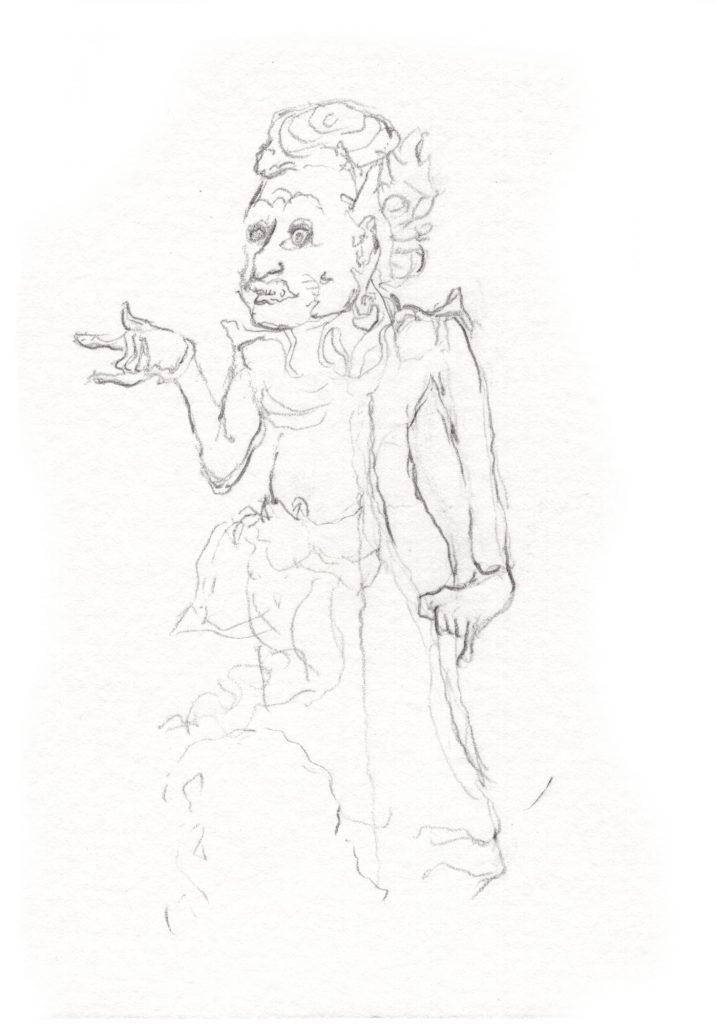Agni, the ancient Vedic deity of fire, has always appealed to me. But until today, I’d only met Agni through poetry, like this hymn to Agni, the fifth hymn of the third book of the Rig Veda, as translated by Ralph Griffith:
Agni who shines against the Dawns is wakened;
the holy Singer who precedes the sages:
With far-spread luster, kindled by the pious,
the Priest has thrown both gates of darkness open.
Agni has waxed mighty by songs of praise,
to be adored with hymns of those who praise him.
Loving the varied shows of holy Order
at the first flush of dawn, he shines as envoy.
Midst mortal’s homes, Agni has been established,
fulfilling with the Law; Friend, germ of waters.
Loved and adored, the height he has ascended;
the Singer, object of our invocations.
Thus I was pleased to finally see a visual depiction of Agni at the Asian Art Museum this afternoon. He was part of a painting from the Ramayana, protecting Sita during her trial by fire, as imagined by a Balinese artist c. 1850-1900. Since this was a traveling exhibit, photography was not permitted, so I drew a quick sketch of Agni — leaving out Sita, Rama, the army of monkeys, the tongues of fire, and everything else in this detailed painting:

